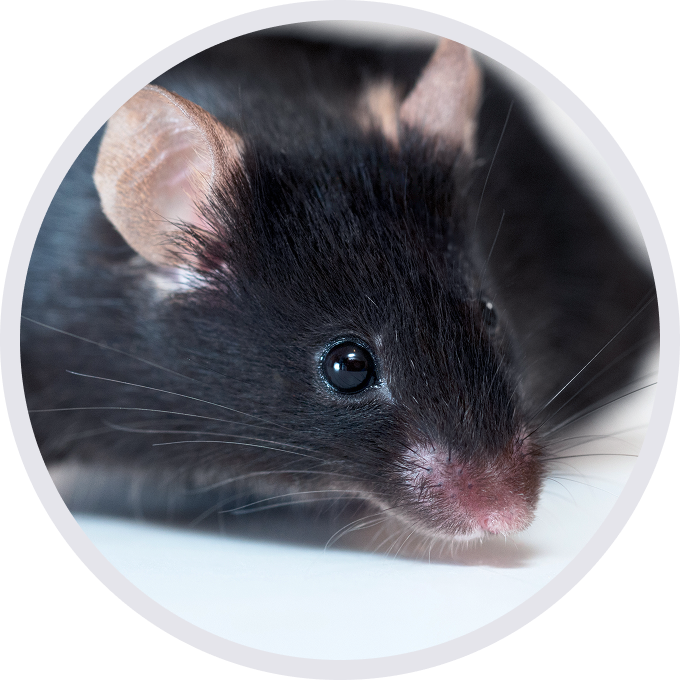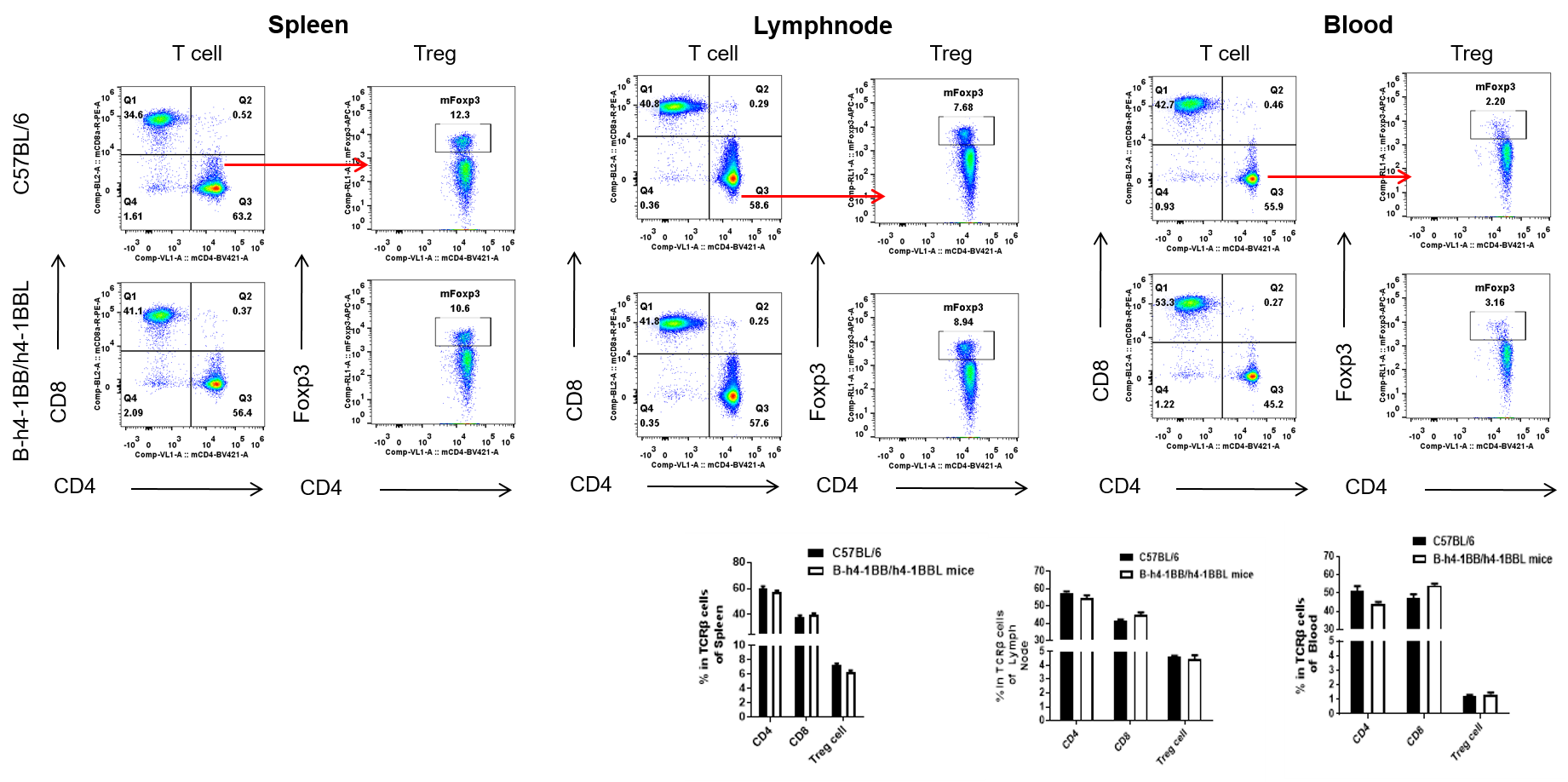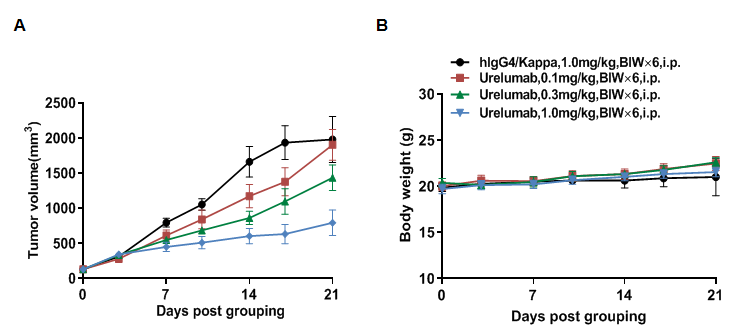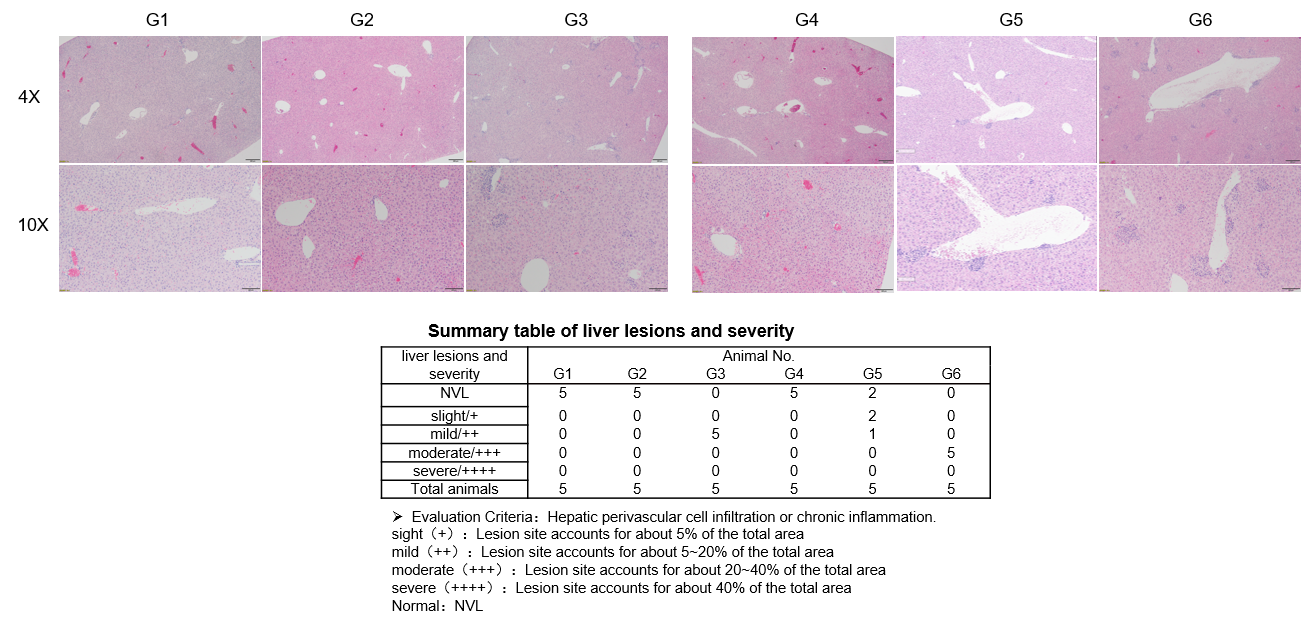
C57BL/6-Tnfrsf9tm1(TNFRSF9)Bcgen Tnfsf9tm1(TNFSF9)Bcgen/Bcgen • 120541
Gene targeting strategy for B-h4-1BB/h4-1BBL mice. The exons 2-7 of the mouse 4-1BB gene, which encode the extracellular domain, were replaced by human 4-1BB exons 2-7 in B-h4-1BB/h4-1BBL mice. The exons 1-3 of the mouse 4-1BBL gene, which encode the transmembrane domain and extracellular domain, were replaced by human 4-1BBL exons 1-3 in B-h4-1BB/h4-1BBL mice.


Analysis of leukocytes subpopulation in spleen. Splenocytes were isolated from C57BL/6 and B-h4-1BB/h4-1BBL mice (n=3). The proportion of leukocytes subpopulation was tested by flow cytometry. As a result, the expression profile of leukocytes subpopulation in homozygous B-h4-1BB/h4-1BBL mice were similar to that in the C57BL/6 mice, indicating that differentiation of T, B, NK, Monocyte, DC and macrophage cells were not affected by the humanization of B-h4-1BB/h4-1BBL mice. The same results were observed in lymph node and blood (data was not shown).

Analysis of T cell subpopulation in spleen, lymph node, blood. The lymphocytes were isolated from spleen, lymph node and blood in C57BL/6 and B-h4-1BB/h4-1BBL mice (n=3). The proportion of T cells subpopulation was tested by flow cytometry. There were no differences between wild-type and B-h4-1BB/h4-1BBL mice.


High-dose human 4-1BB antibody Urelumab caused liver toxicity in B-h4-1BB mice and B-h4-1BB/h4-1BBL mice. Homozygous B-h4-1BB mice and B-h4-1BB/h4-1BBL mice were treated with PBS or Urelumab (in-house) as indicated on the graph (n=5, female, 7-week-old). Serum was collected and ALT and AST levels were detected on day 21. Urelumab at 20 mg/kg caused a significant increase in ALT compared with the PBS control in B-h4-1BB mice, while the same treatment had no effect in B-h4-1BB/h4-1BBL mice. In contrast, there was no significant increase in AST compared with the PBS control in B-h4-1BB mice, but 20 mg/kg Urelumab treatment caused a significant increase in AST in B-h4-1BB/h4-1BBL mice. There was no significant change in ALT or AST in the 1 mg/kg dose group for both B-h4-1BB mice and B-h4-1BB/h4-1BBL mice. Values are expressed as mean ± SEM.

In B-h4-1BB mice (G1-G3), no obvious abnormal changes were observed in the liver when the Urelumab dose was 1 mg/kg (G2). At a dose of 20 mg/kg (G3), changes were observed in 5/5 of the animals, manifested as perivascular cell infiltration or chronic inflammation in the liver, with mild lesions. In B-h4-1BB/h4-1BBL mice (G4-G6), in the 1 mg/kg group (G5), 3/5 of the mice showed pathological changes (slight in 2/5, mild in 1/5); however, in the 20 mg/kg dose group (G6), all experimental animals exhibited moderate changes in the liver (5/5). Overall, the degree and incidence of liver lesions in the 20 mg/kg group (G6) were significantly higher than those in the 1 mg/kg group (G5). The above results suggested that Urelumab at 20 mg/kg was more likely to cause perivascular cell infiltration or chronic inflammation in the liver than at 1 mg/kg. B-h4-1BB/h4-1BBL mice were more sensitive to the toxic effects of Urelumab than B-h4-1BB mice. B-h4-1BB/h4-1BBL mice are a good preclinical toxicity evaluation model.